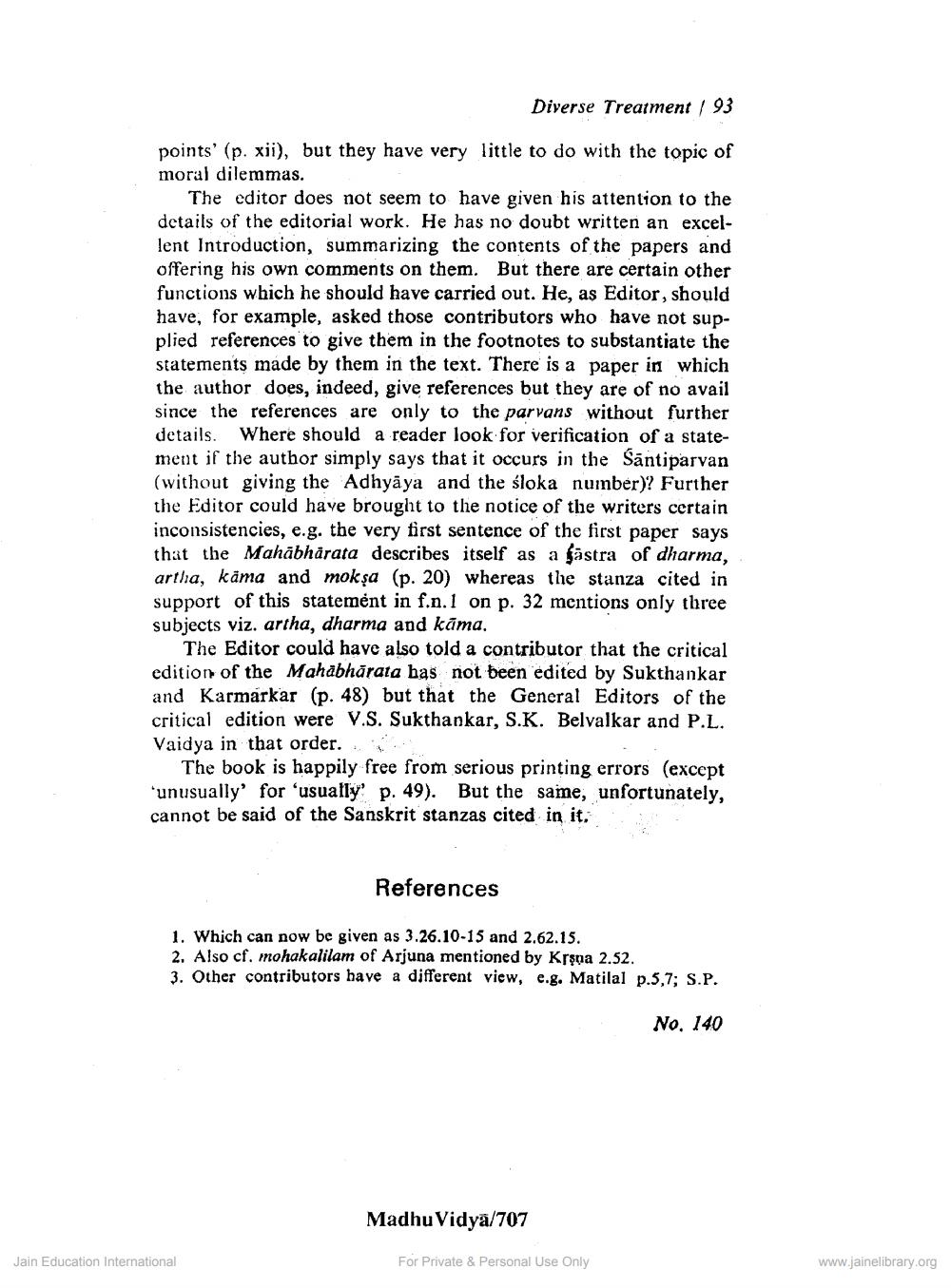________________
Diverse Treatment | 93 points' (p. xii), but they have very little to do with the topic of moral dilemmas.
The editor does not seem to have given his attention to the details of the editorial work. He has no doubt written an excellent Introduction, summarizing the contents of the papers and offering his own comments on them. But there are certain other functions which he should have carried out. He, as Editor, should have, for example, asked those contributors who have not supplied references to give them in the footnotes to substantiate the statements made by them in the text. There is a paper in which the author does, indeed, give references but they are of no avail since the references are only to the parvans without further details. Where should a reader look for verification of a statement if the author simply says that it occurs in the Santiparvan (without giving the Adhyaya and the sloka number)? Further the Editor could have brought to the notice of the writers certain inconsistencies, e.g. the very first sentence of the first paper says that the Mahabharata describes itself as a fastra of dharma, artha, kama and mokşa (p. 20) whereas the stanza cited in support of this statement in f.n.1 on p. 32 mentions only three subjects viz. artha, dharma and kāma.
The Editor could have also told a contributor that the critical edition of the Mahabharata has not been edited by Sukthankar and Karmarkar (p. 48) but that the General Editors of the critical edition were V.S. Sukthankar, S.K. Belvalkar and P.L. Vaidya in that order.
The book is happily free from serious printing errors (except 'unusually' for 'usually' p. 49). But the same, unfortunately, cannot be said of the Sanskrit stanzas cited in it.
References
1. Which can now be given as 3.26.10-15 and 2.62.15.
2. Also cf. mohakalilam of Arjuna mentioned by Krsna 2.52.
3. Other contributors have a different view, e.g. Matilal p.5,7; S.P.
No. 140
Jain Education International
Madhu Vidya/707
For Private & Personal Use Only
www.jainelibrary.org




